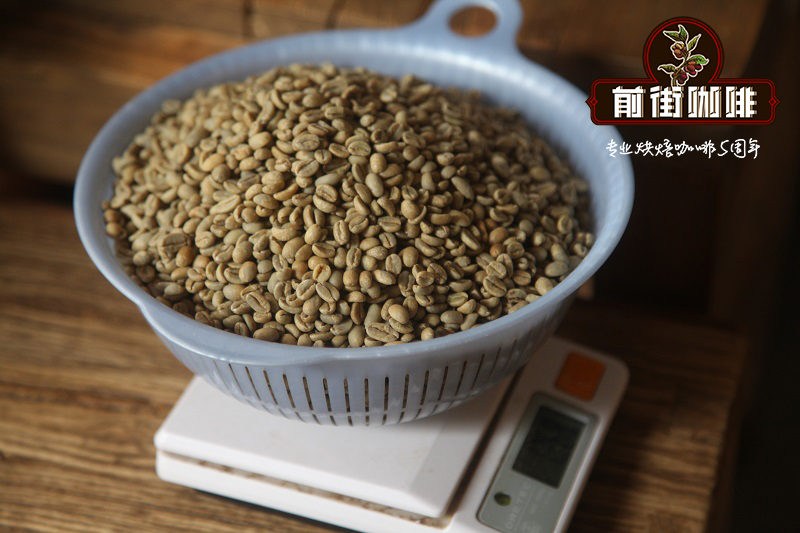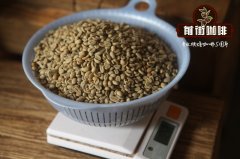What is the impressive taste of coffee on the Indonesian island of Sulawesi? What kind of coffee is produced in Indonesia

Professional coffee knowledge exchange more coffee bean information please follow the coffee workshop (Wechat official account cafe_style)
What is the impressive taste of coffee on the Indonesian island of Sulawesi? What coffee producing areas are there in Indonesia?
Sulawesi Island, also known as celebes Celebes Island, is the 11th largest island in the world by area and combines multi-ethnic cultures. The name celebes means rapids, which originally meant that in 1511, a sailor was stranded here due to a severe storm and was firmly named celebes. Sulawesi Island, shaped like an inverted spoon, has a high mountain in the middle and is thousands of miles away.
On the island of Sulawesi under Indonesia's jurisdiction, the equatorial line crosses the northern peninsula and covers an area of 170,000 square kilometers, which is about the size of Taiwan, while the Tana Toraja plateau is located in the middle of the island, with steep mountains and thousand Michael peaks everywhere. It also belongs to volcanic geological soil, which is a suitable geographical condition for growing coffee.
Today, the early rich iron ore is firmly combined with the local language, changing the place names Sula (island) and Wesi (iron ore)-- Sulawesi.
The island is divided into six provinces, and this batch of beans are operated by the Toraja people in the mountainous areas, because the local people still lack information about the export goods, and the reason is also due to the topography. The elevation of the species is about 1400 meters above sea level, and it is quite far away from the distribution center. Farmers are unable to send the finished products to the distribution centers for sale, so they can only be handed over to mid-market traders who understand the trade language (English), or traders to do long-term direct cooperation.
Indonesia has several famous producing islands, including Sumatra (Lingtong region, Toba volcanic Lake District, Sidikalang), Java (state-owned arabica beans), Sulawesi (Toraja). Wait.
This batch of Tana Toraja sacks are printed with images of cow heads, which in Sulawesi refers to the patron saint, and the beans are even more eye-catching and plump. After the cup test, he has the characteristics of quite clean Indonesian beans, and the thickness is still enough to see, medium-baked her, with a level of sour flavor, clean! In the deep baking, her later rhyme is quite characteristic, with direct sweetness and long-lasting sweetness.
Dry aroma: sweet nutty, mushroom, thick wood, spice nutty, orange peel sweet
Wet fragrance: Woody, nutty, thick grease, cereal, wine, brown sugar
Sipping: almond flavor with wood, high cleanliness, strong aftertaste with mushroom texture, Body thick, in Indonesia beans is a small number of high-quality bean smell, brown sugar flavor is obvious! Fruit fermentation taste residual, cold drinks such as tea tablets and taste very full aroma.
Sulawesi (Siribes) was deeply influenced by Dutch rule from 1605 to World War II; the Dutch East India Company controlled the trade of Sulawesi in 1669; in the mid-1600s, the Dutch built Fort Rotterdam in Urong Pandang (now known as Wangkassi), and it was not until 1905 that the whole island was completely conquered and included in Dutch East India In the 1700s, the East India Company controlled all coffee production in Indonesia and introduced Arabica coffee (Tibica seed) to Sulawesi in 1750.
It takes a while to travel from Minneapolis to Tanatolaya in Sulawesi, Minneapolis-Tokyo-Singapore-Jakarta-Wangkasek, and then an eight-hour drive north to Rantepao in Tanatolaya, which is simply the most beautiful place in the world, full of green, rice paddies, a tranquil atmosphere, and traditional high-footed boathouses (Tongkonan Houses) everywhere. The house is engraved with special Toraya patterns as decoration.
Indonesian coffee has traditionally been treated with raw beans by wet grinding (Giling-Basah), or wet plucking, as in Sumatra; Toya, a Japanese-Indonesian joint venture, introduced the traditional Central American washing method to Sulawesi in 1976.
Pedamaran Farm, owned by Toako, is located at 900m above sea level. It buys raw beans (humidity is about 40 per cent) from small coffee farmers, who usually grow coffee at 1,200m above sea level. After the beans are quickly sent to Pedamaran farm, they are placed in an elevated bed to dry at the farm's processing plant. If coffee farmers want to sell their raw beans to Toako, they must provide proof of raw bean grade, including details of selective harvesting, storage, transportation, humidity, etc.; coffee farmers need to apply for coffee identity cards to sell coffee on weekly market days in the Tanatolaya area. This batch of coffee is planted at a higher altitude.
Most of the coffee in Tanatolaya is S795, which is a Tibica hybrid, which once again proves how deeply the variety affects the flavor of coffee; there are a lot of East Timorese species in Indonesia, which is a cross between Robusta and Arabica, but Tanatolaya succeeded in retaining a higher quality coffee variety.
In 2010, Sulawesi received twice as much rainfall as in previous years, reducing the 2011 harvest by 70%, and it was almost impossible to buy Sulawesi coffee during the harvest season.
Origin: Sulawesi Island
Producing area: Tanatolaya Pango Pango-Perindingan
Farm: multiple small coffee farmers
Coffee varieties: Tibica derived varieties
Altitude: 1400 Murray 1600m
Raw bean treatment: washed and dried in the central sun treatment plant
Coffee flavor:
The nose is intense, with aromas of flowers, vanilla cream and roasted vegetables.
Important Notice :
前街咖啡 FrontStreet Coffee has moved to new addredd:
FrontStreet Coffee Address: 315,Donghua East Road,GuangZhou
Tel:020 38364473
- Prev

What are the amazing flavors and characteristics of Indonesian Sulawesi Tonaga coffee? Wet planing Fassu
Professional coffee knowledge exchange more coffee bean information please follow the coffee workshop (Wechat official account cafe_style) Indonesia Sulawesi Tonaga coffee what is the amazing flavor and characteristics? Is the wet plane Farrawesi coffee good? It is said that more than 300 years ago, in the era of great navigation in which colonialism prevailed, the Dutch spilled the first coffee seed on Indonesia.
- Next

Where does the coffee come from? What are the beans in the three major coffee producing areas? What are the characteristics of each?
Professional coffee knowledge exchange more coffee bean information please pay attention to the coffee workshop (Wechat official account cafe_style) coffee producing areas? What are the beans in the three major coffee producing areas? What are the characteristics of each? In such a big circle of the earth, coffee growing places are also distributed all over the world. As long as the geology and climate match, there may be dense coffee producing areas, but different locations,
Related
- Detailed explanation of Jadeite planting Land in Panamanian Jadeite Manor introduction to the grading system of Jadeite competitive bidding, Red bid, Green bid and Rose Summer
- Story of Coffee planting in Brenka region of Costa Rica Stonehenge Manor anaerobic heavy honey treatment of flavor mouth
- What's on the barrel of Blue Mountain Coffee beans?
- Can American coffee also pull flowers? How to use hot American style to pull out a good-looking pattern?
- Can you make a cold extract with coffee beans? What is the right proportion for cold-extracted coffee formula?
- Indonesian PWN Gold Mandrine Coffee Origin Features Flavor How to Chong? Mandolin coffee is American.
- A brief introduction to the flavor characteristics of Brazilian yellow bourbon coffee beans
- What is the effect of different water quality on the flavor of cold-extracted coffee? What kind of water is best for brewing coffee?
- Why do you think of Rose Summer whenever you mention Panamanian coffee?
- Introduction to the characteristics of authentic blue mountain coffee bean producing areas? What is the CIB Coffee Authority in Jamaica?

